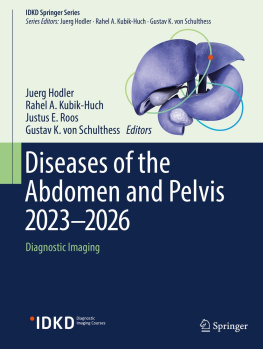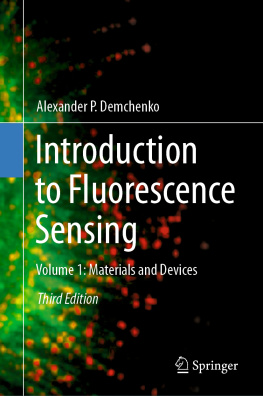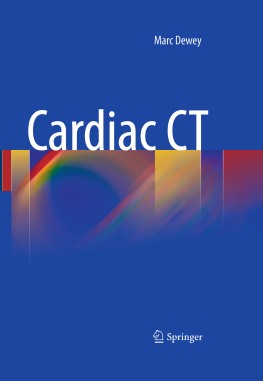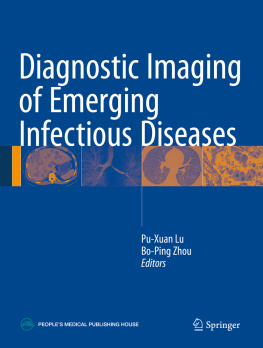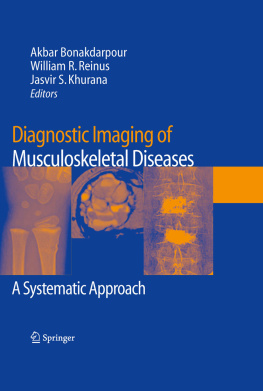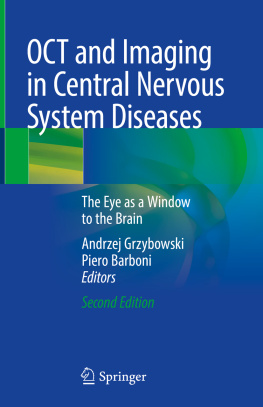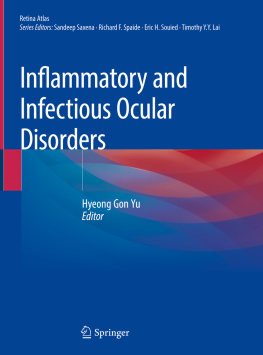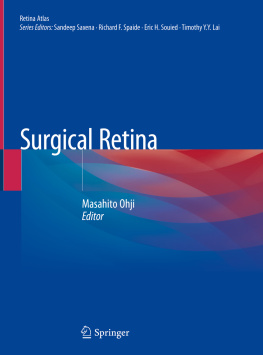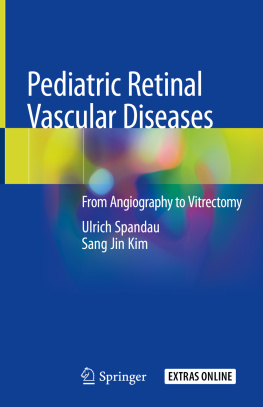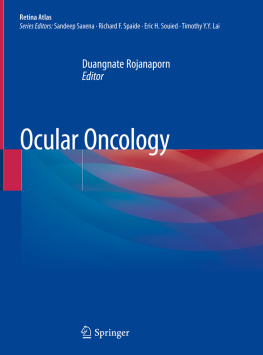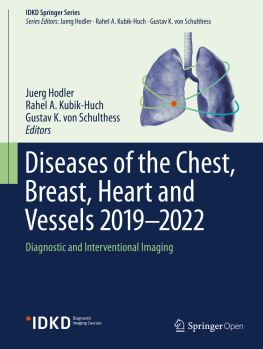Editors
Martin Zinkernagel
Department of Ophthalmology and Department of Clinical Research, Inselspital Bern University Hospital, University of Bern, Bern, Switzerland
Chantal Dysli
Department of Ophthalmology and Department of Clinical Research, Inselspital Bern University Hospital, University of Bern, Bern, Switzerland
ISBN 978-3-030-22877-4 e-ISBN 978-3-030-22878-1
https://doi.org/10.1007/978-3-030-22878-1
Springer Nature Switzerland AG 2019
This work is subject to copyright. All rights are reserved by the Publisher, whether the whole or part of the material is concerned, specifically the rights of translation, reprinting, reuse of illustrations, recitation, broadcasting, reproduction on microfilms or in any other physical way, and transmission or information storage and retrieval, electronic adaptation, computer software, or by similar or dissimilar methodology now known or hereafter developed.
The use of general descriptive names, registered names, trademarks, service marks, etc. in this publication does not imply, even in the absence of a specific statement, that such names are exempt from the relevant protective laws and regulations and therefore free for general use.
The publisher, the authors, and the editors are safe to assume that the advice and information in this book are believed to be true and accurate at the date of publication. Neither the publisher nor the authors or the editors give a warranty, express or implied, with respect to the material contained herein or for any errors or omissions that may have been made. The publisher remains neutral with regard to jurisdictional claims in published maps and institutional affiliations.
This Springer imprint is published by the registered company Springer Nature Switzerland AG
The registered company address is: Gewerbestrasse 11, 6330 Cham, Switzerland
Foreword
Imaging technologies for retinal diseases have made considerable progress in the last decades. One of the cornerstones of retinal imaging is based on autofluorescence. Fundus autofluorescence (FAF), including quantitative fundus autofluorescence, which measures the intensity of autofluorescence of endogenous fluorophores, is nowadays an established imaging modality in clinical ophthalmology. However, fluorescence cannot only be quantified by its intensity but also by its lifetime. Fluorescence lifetime imaging provides information on how long a fluorophore remains, on average, in its excited state before returning to its ground state. In contrast to intensity imaging, fluorescence lifetime imaging depends on the molecular environment of the fluorophore but not on its concentration and therefore is able to provide entirely new insights into the pathology of retinal and macular diseases. With the introduction of the fluorescence lifetime imaging ophthalmoscopy (FLIO), our understanding of fluorescence lifetimes of endogenous retinal fluorophores has expanded tremendously and new impetus has been generated for research of various retinal diseases.
This book is meant to provide a review of current knowledge of fluorescence lifetime imaging of the retina and an overview of fluorescence lifetime findings in common retinal diseases, starting from techniques and principles to clinical applications of FLIO. The book has been written for anyone interested in retinal imaging and understanding fluorescence lifetime imaging or in learning more about it.
We would like to express our sincere appreciation to Heidelberg Engineering who have further refined fluorescence lifetime imaging of the retina based on a confocal scanning ophthalmoscope and have supported the advancement of FLIO with relentless dedication. We would also like to thank the staff at Springer Publishing for their professional commitment and efficiency to publish this book and to promote this emerging imaging technique.
Chantal Dysli
Martin Zinkernagel
Bern, Switzerland
April 2019
Abstract
Introduction
Fluorescence lifetime imaging ophthalmoscopy (FLIO) allows noninvasive in vivo measurement of autofluorescence lifetimes of natural fluorophores of the retina upon laser excitation. Beyond autofluorescence intensity, autofluorescence lifetimes provide further information about the metabolic state of the retina. By now, various publications and reports are available on FLIO. These include studies in healthy subjects, various degenerative and hereditary retinal diseases as well as laboratory studies in mouse models.
This book shall summarize the current state of knowledge in the field of fluorescence lifetime imaging in ophthalmology, and highlight the most important basic and clinical features of this technique.
Methods
Fluorescence lifetime imaging was performed using a fluorescence lifetime imaging ophthalmoscope (Heidelberg Engineering, Heidelberg, Germany), which includes an excitation laser (470 nm), two detection channels (short wavelength: 498560 nm and long wavelength: 560720 nm), and an infrared camera to correct for eye movements. Thereby, within the image acquisition time of about 2 minutes, an autofluorescence intensity image and corresponding lifetime map, and an infrared image are gained. Subsequently, individual lifetime parameters can further be analyzed. Data was correlated with clinical information and other imaging modalities such as color fundus images, optical coherence tomography, and others as appropriate.
Results and Discussion
This book includes a basic section about the background, the technique, and the image analysis. Subsequently, results of in vitro measurements of individual fluorophores and compounds, and measurements in tissues, healthy eyes, and various retinal diseases are presented, interlinked, and discussed. At the end, possible future directions are outlined.
Conclusion
Fluorescence lifetime imaging ophthalmoscopy represents an interesting tool for early detection of retinal metabolic changes in various diseases. It can be used for diagnostic purposes as well as for follow-up examinations, and potentially provides a targeted tool for future interventional trials.
Abbreviations
A2E
N-retinylidene-N-retinyl-ethanolamine
AEL
Accessible exposure limit
AGE
Advanced glycation end products
AMD
Age-related macular degeneration
Anti-VEGF
Vascular endothelial growth factor inhibitors
BRB
Bloodretina barrier
CHM
Choroideremia
CHF
Complement factor H
CSCR
Central serous chorioretinopathy
D
Diopter
ERG
Electroretinography
ETDRS
Early Treatment of Diabetic Retinopathy Study
FA
Fluorescein angiography
FAD/FADH 2
Oxidized and reduced flavin adenine dinucleotide
FAF
Fundus autofluorescence
FLIM
Fluorescence lifetime imaging microscopy
FLIO
Fluorescence lifetime imaging ophthalmoscopy
FMN
Flavin mononucleotide
FRET
Frster resonance energy transfer
FWHM
Full width at half maximum
GA
Geographic atrophy
HEYEX
Heidelberg Eye Explorer
ICG
Indocyanine green angiography
IR
Infrared


